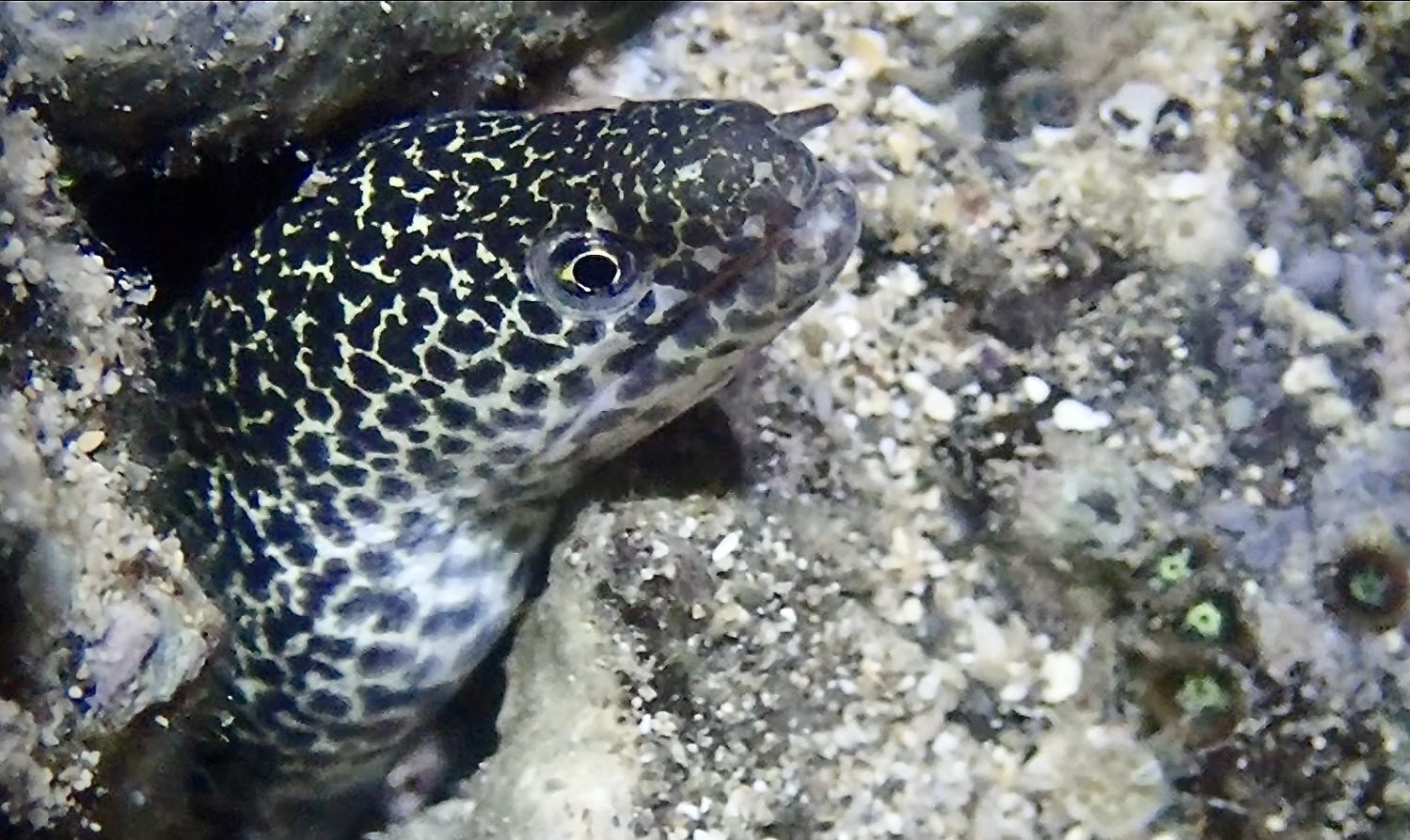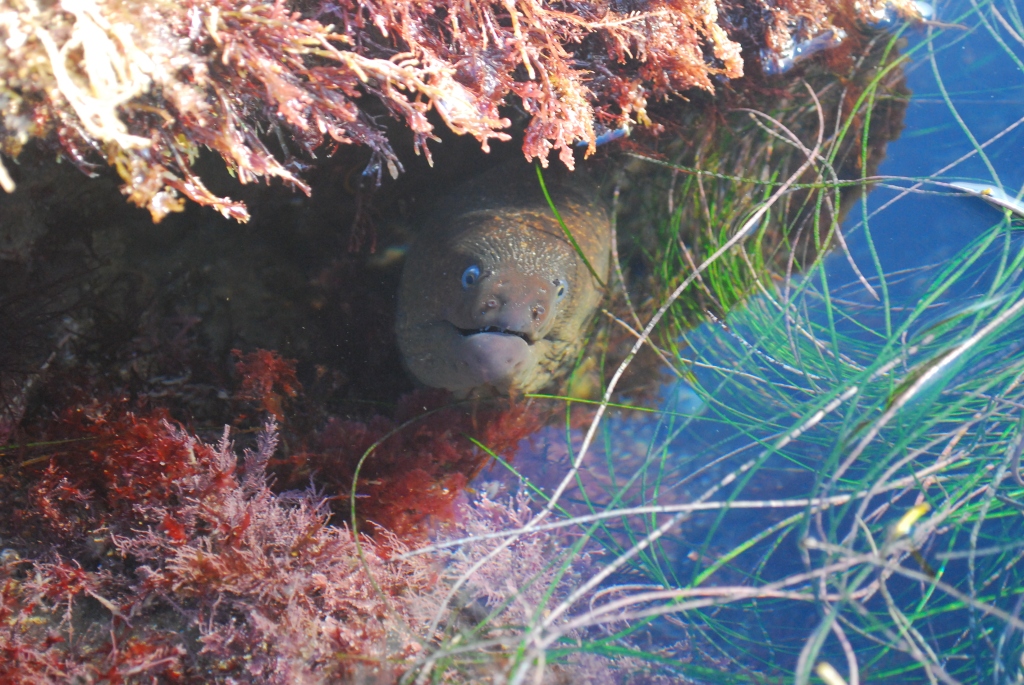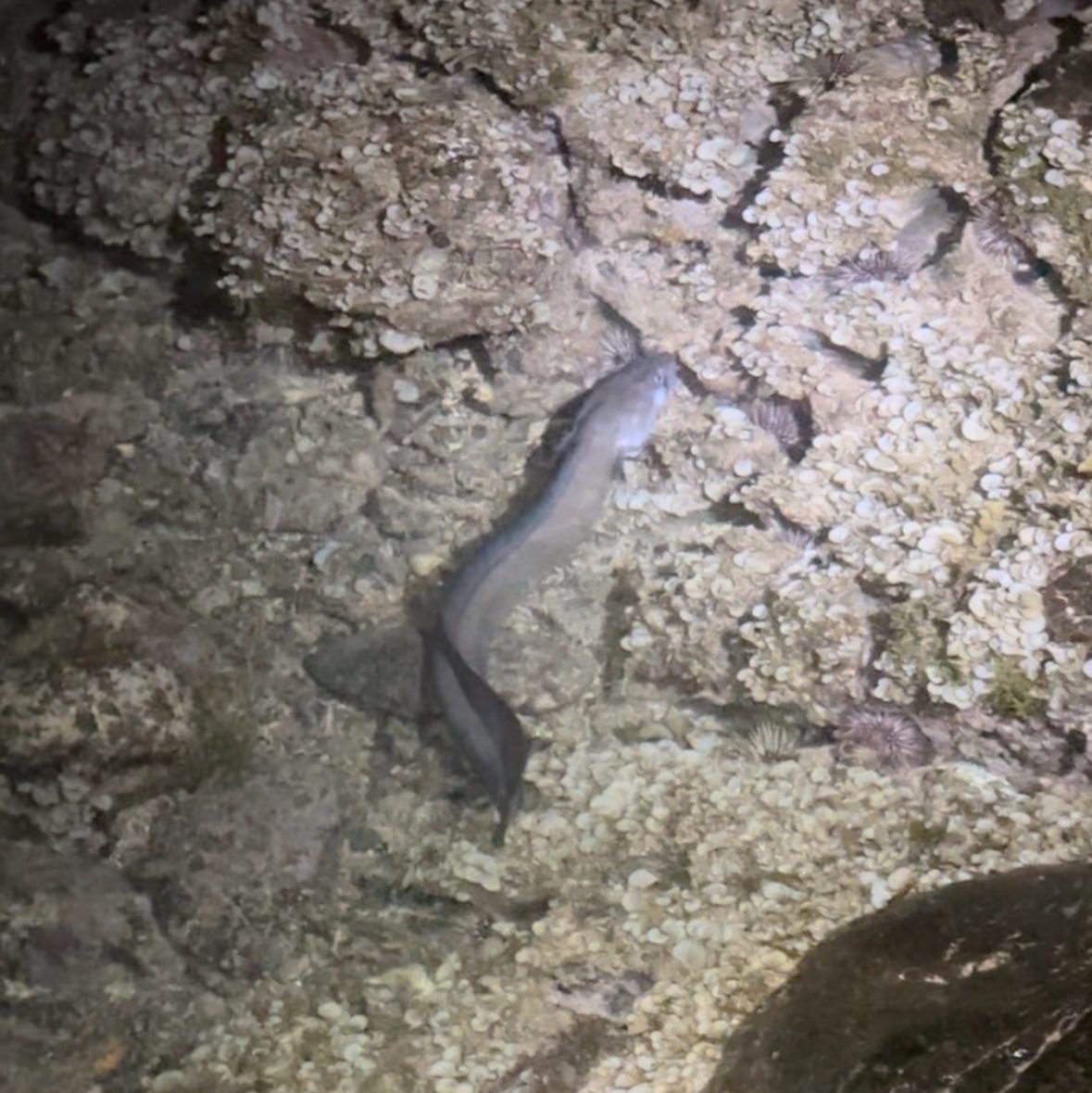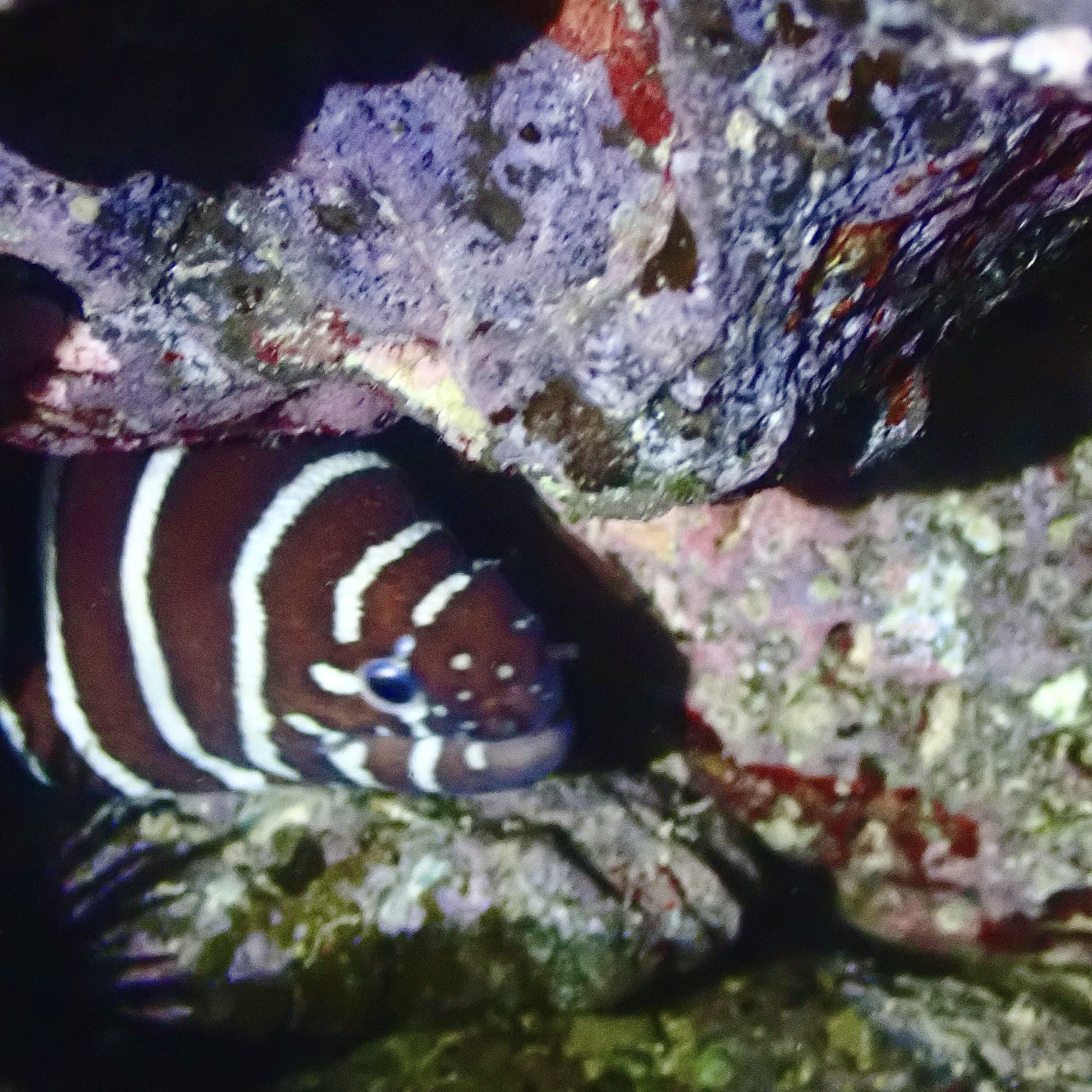Will I See Eels At The Tide Pools?

Short Answer: Possibly
Long Answer:
Eels are some of the most frequent large marine visitors to the tide pools; more common than octopuses but less common than small, shallow-water sharks. While not an everyday occurrence, if you visit the intertidal enough and know what you look for, you are fairly likely to see an eel, depending, of course, on your location. Lt’s break down some common factors that will impact your eel sighting success rate in the intertidal.
Extreme Low Tides

Eels are big, often several feet long as adults. As a consequence, they aren’t often going to be seen in the high intertidal. First, will likely find it difficult to sustain the physiological stressors that come with the high intertidal such as temperature fluctuations and salinity swings. Although some species can survive out of water for some time, they aren’t able to travel over land very well. In addition, most eels prey upon fish or crustaceans appropriate to their size, prey that many small tidal pools won’t support. As a result, eels tend to stay in the low intertidal. Now that doesn’t mean that eels can’t live in microhabitats higher in the intertidal, but for the most part they’ll stick to areas they can rely on for food and other necessities. So if you’re after an eel in the intertidal, wait until the lowest tides.
Location

That said, there are intertidal zones around the world where you don’t have to wait for low tides to see eels. Let’s start with our home turf.
In California, eels are rather infrequent in the intertidal. I have only seen a couple in all my visits. California morays (Gymnothorax mordax), the only species you are likely to see in the intertidal, doesn’t venture north of the Channel Islands as the water gets colder.
Wolf eels (Anarrhichthys ocellatus) are very occasionally found in the intertidal in the Northern Pacific along the coasts of Washington, British Columbia, and Alaska. These animal range from the intertidal to deep water and prefer rocky crevices and outcroppings, but don’t come to the tide pools regularly. But who knows, you might get lucky.
In Hawaii and other Pacific islands, the story is different. These areas abound with morays (Family Muraenidae) of great variety in size, color, and prey preference, and they are often seen in the tide pools and on shallow reefs. I have seen both young morays emerging in the intertidal after night fall and adults that were active in deeper waters. While morays are the most common visitors to the intertidal, conger eels (Conger sp.) will also occasionally show up in the tide pools. We saw one on our last trip to Maui, chomping on a small fish. Eels in the tropics are more likely to stray higher into the intertidal due to the abundance of young reef fish that take refuge there.
Tide Pool Features

Even among intertidal coastlines that create tide pools, there is great variation in size, depth, and expanse of a tide pool that can impact what animals live there. Eels are rather picky in the pools they choose and knowing what to look for can help you reduce wasted time. Eels prefer large pools with significant length and depth. In California, pools that are connected to open water and form a calm, mini-bay get bonus points as the eel can make a quick escape. In Hawaii, eels are more likely to be willing to travel over land. Although they don’t do well for long distances, they can move from pool to pool, so an area with multiple close pools separated only by small sections of dry rock are great places to look. Similar to octopuses, eels like to hide under large boulders during the day and emerge at night, occasionally just poking their heads out to watch and smell for prey, as the one above is doing.
Whether you’re only interested in learning more about the ecology and behavior of shallow-water eels or are determined to find one in the intertidal, this information gives you just a tiny glimpse of what there is to know about these amazing animals. Drop a comment below if you’ve seen an eel in the intertidal and happy tide pooling!

Categories
tags
Subscribe to the blog
Sign up to receive weekly emails with tide pooling information and guides so you never miss a post!

Leave a comment